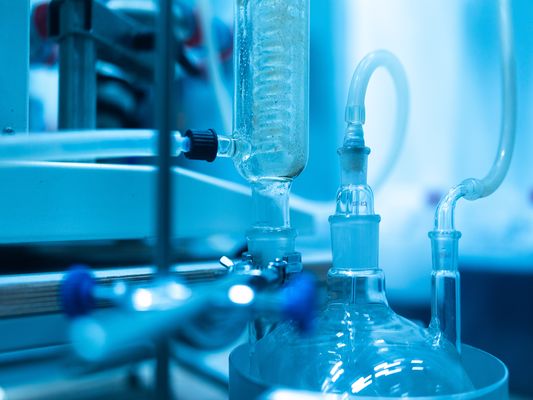Estrogen Receptor Library
Designed to effectively target the receptor and block estrogen release
8 320 compounds
Breast cancer remains one of the major health problems among the women’s population. This disease frightens millions of women around the world. The tremendous efforts of researchers and drug developers in this field have made significant progress in treatment and early diagnostics. Breast cancer is often fueled by hormones and most commonly uses estrogen to grow. Treatment with anti-estrogen therapy can effectively block the growth of the cancer cells. Thus, Estrogen Receptor (ER) remains the most important target for the development of new effective drugs against breast cancer.
We combined different approaches in the design of ER focused library to bring the most promising and convenient for follow-up starting points in your screening campaign. The library has been carefully reviewed in the context of MedChem tractability and intrinsic high diversity. Additionally, compounds were reviewed for sufficient solubility and stability in DMSO solution to ensure the high quality of the library.
The Estrogen Receptor library is available for delivery in different pre-plated formats.
Typical Formats
Catalog No.
ERL-8320-0-Z-10
Compounds
8 320
7 plates
Amount
≤ 150 nL of 10 mM of DMSO solutions
Plates and formats
1536-well echo microplates, first and last four columns empty, 1280 compounds per plate
Price
This email address is being protected from spambots. You need JavaScript enabled to view it.
Catalog No.
ERL-8320-10-Y-10
Compounds
8 320
26 plates
Amount
10 µL of 10 mM DMSO solutions
Plates and formats
384-well echo LDV plates, 1, 2 and 23, 24 columns empty, 320 compounds per plate
Price
This email address is being protected from spambots. You need JavaScript enabled to view it.
Catalog No.
ERL-8320-50-X-10
Compounds
8 320
157 plates
Amount
50µL of 10 mM DMSO solutions
Plates and formats
96-well Greiner bio-one plates, 1 and 12 columns empty, 80 compounds per plate
Price
This email address is being protected from spambots. You need JavaScript enabled to view it.
Catalog No.
ERL-8320
Compounds
8 320
Amount
Custom
Plates and formats
Any custom format
Price
This email address is being protected from spambots. You need JavaScript enabled to view it.
Download SD files
Library design
The database of activities related to SERMs (Selective Estrogen Receptor Modulators) was collected from the public domain (ChEMBL and Reaxys) and analyzed by the activity range. In total, about 15k activities were found, analyzed, and then separated by chemotypes. The most interesting from medchem prospective scaffolds were used for substructure searches, while the most active molecules were assembled into a validation set for in silico models – 3D pharmacophore and docking.
In addition, all available RE structures in PDB were combined and analyzed. Over 200 co-crystallized ligands with ER-alpha were extracted and superimposed to identify the most important interaction points and common structural motifs.
Superposition of all ER-alpha co-crystalized ligands, www.rcsb.org:
- All ligands share a similar binding mode which aligns with Estradiol binding.
- Two hydroxy groups from different/opposite parts of the binding pocket.
- One hydroxy group (H-bond donor) is well conserved among all extracted ligands.
- The conserved H-bond interaction with the OH-group is essential for activity when another can be replaced with different bioisosteres and H-bond donors.

About 15 distinct pharmacophores were identified with the four most common interaction maps selected for the in silico models:
- Estrogen receptor alpha 7 clusters based on PDB ID: 1sj0, 2iog, 2qxm, 3os8, 5aau, 5dwi, 5krj.
- Estrogen receptor beta 5 clusters based on PDB ID: 1nde, 1qkm, 2fsz, 2giu2yly.
Three 3D-pharmacophore models with exclusion volume were built, validated, and then used for the search of potential new ER ligands. As a result, over 10k compounds were identified as potential hits for ER-alpha, and 7k+ potentially active compounds were identified for ER-beta. The final library of potential estrogen receptor modulators passed through a manual review of predicted binding poses and was filtered using extended MedChem filters.
Examples of the pharmacophore models with reference molecules and predicted hits




Hydrophobic features are marked as orange spheres; Hydroxy group function is highlighted with purple.



